#indian children actors
Explore tagged Tumblr posts
Text

'We thought it was a ball' - the bombs killing and maiming Indian children
Over the last three decades, at least 565 children in the Indian state of West Bengal have been injured or killed by home-made bombs, a BBC Eye investigation has found.
So what are these deadly devices and how are they linked to political violence in West Bengal? And why are so many Bengali children paying the price?
On a bright summer morning in May 1996, six boys from a slum in Kolkata, the capital of India's West Bengal state, stepped out to play cricket in a narrow alley.
Their shantytown, nestled in the middle-class neighbourhood of Jodhpur Park, thrummed with life. It was a holiday - voting day in a general election.
Nine-year-old Puchu Sardar, one of the boys, grabbed a cricket bat and quietly slipped past his sleeping father. Soon, the cracking noise of bat meeting ball echoed through the alley.
A ball batted out of the boundaries of their makeshift pitch sent the boys searching for it in a small garden nearby. There, in a black plastic bag, they found six round objects.
They looked like cricket balls someone had left behind, and the boys returned to the game with their spoils.
One of the "balls" from the bag was bowled at Puchu who struck it with his bat.
A deafening explosion tore through the alley. It was a bomb.
As the smoke lifted and neighbours rushed outside, they found Puchu and five of his friends sprawled on the street, their skin blackened, clothes scorched, bodies torn.
Screams pierced the chaos.
Seven-year-old Raju Das, an orphan raised by his aunt, and seven-year-old Gopal Biswas died of their injuries. Four other boys were wounded.
Puchu narrowly survived, having suffered serious burns and shrapnel wounds to his chest, face and abdomen.
He spent over a month in hospital. When he came home he had to use kitchen tongs to remove shrapnel still lodged in his body because his family had run out of money to pay for any more medical care
Read more
#indian children#society for indian children's welfare#murrow indian children's home#malin's intelligence scale for indian children#american indian children's literature#bob marley indian children#indian children's books#indian children welfare act#indian children poem#indian children praying for trump#indian children clothes#indian children books#indian children annette wynne#indian children academy school#indian children academy school waidhan#indian children actors#indian children authors#indian children academy barau#indian children act#indian children actress#indian children attire#american indian children#a large number of indian children die of#anglo indian children#average indian children's height#apache indian children#autism in indian children#asian indian children#american indian children's literature award#american indian children and the law
0 notes
Text
South Asian and Hindu Influences in ATLA (Part 2)
disclaimer: i was raised culturally and religiously hindu, and though i've tried to do my research for this post and pair it with my own cultural knowledge, i'm not an expert on hinduism by any means. should i mess up, please let me know.
please also be aware that many of the concepts discussed in this post overlap heavily with religions such as buddhism and jainism, which might have different interpretations and representations. as i'm not from those religions or cultures, i don't want to speak on them, but if anyone with that knowledge wishes to add on, please feel free.
Part 1
In the previous post, I discussed some of the things ATLA got right in its depictions of desi and hindu cultures. unfortunately, they also got plenty of things wrong - often in ways that leaned towards racist caricatures - so let's break them down, starting with...
Guru Pathik
both the word "guru" and name "pathik" come from sanskrit. pathik means "traveler" or "he who knows the way" while guru is a term for a guide or mentor, similar to a teacher.
gurus were responsible for the very first education systems in ancient india, setting up institutions called gurukuls. students, referred to as disciples, would often spend years living with and learning from their gurus in these gurukuls, studying vedic and buddhist texts, philosophy, music and even martial arts.
however, their learning was not limited merely to academic study, as gurus were also responsible for guiding the spiritual evolution of their disciples. it was common for disciples to meditate, practice yoga, fast for days or weeks, and complete mundane household chores every day in order to instill them with self-discipline and help them achieve enlightenment and spiritual awareness. the relationship between a guru and his disciple was considered a sacred, holy bond, far exceeding that of a mere teacher and student.
aang's training with guru pathik mirrors some of these elements. similar to real gurus, pathik takes on the role of aang's spiritual mentor. he guides aang in unblocking his chakras and mastering the avatar state through meditation, fasting, and self-reflection - all of which are practices that would have likely been encouraged in disciples by their gurus.
pathik's design also takes inspiration from sadhus, holy men who renounced their worldly ties to follow a path of spiritual discipline. the guru's simple, nondescript clothing and hair are reflective of the ascetic lifestyle sadhus are expected to lead, giving up material belongings and desires in order to achieve spiritual enlightenment and, ultimately, liberation from the reincarnation cycle.
unfortunately, this is where the respectful references end because everything else about guru pathik was insensitive at best and stereotypical at worst.
it is extremely distasteful that the guru speaks with an overexaggerated indian accent, even though the iranian-indian actor who plays him has a naturally british accent. why not just hire an actual indian voice actor if the intention was to make pathik sound authentic? besides, i doubt authenticity was the sole intention, given that the purposeful distortion of indian accents was a common racist trope played for comedy in early 2000s children's media (see: phineas and ferb, diary of a wimpy kid, jessie... the list goes on).
furthermore, while pathik is presented a wise and respected figure within this episode, his next (and last) appearance in the show is entirely the opposite.
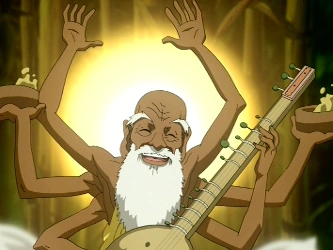
in the episode nightmares and daydreams, pathik appears in aang's nightmare with six hands, holding what appears to be a veena (a classical indian music instrument). this references the iconography of the hindu deity Saraswati, the goddess of wisdom and knowledge. the embodiment of divine enlightenment, learning, insight and truth, Saraswati is a member of the Tridevi (the female version of the Trimurti), one of the most respected and revered goddesses in the Hindu pantheon... and her likeness is used for a cheap laugh on a character who's already treated as a caricature.
that's bad enough on its own, but when you consider that guru pathik is the only explicitly south asian coded character in the entire show, it's downright insulting. for a show that took so many of its foundational concepts from south asia and hinduism and yet provided almost no desi representation in return, this is just rubbing salt in the wound.
Chakras
"chakra", meaning "circle" or "wheel of life" in sanskrit, refers to sources of energy found in the human body. chakra points are aligned along the spine, with energy flowing from the lowest to the highest point. the energy pooled at the lowest chakra is called kundalini, and the aim is to release this energy to the highest chakra in order to achieve spiritual enlightenment and consciousness.
the number of chakras varies in different religions, with buddhism referencing five chakras while hinduism has seven. atla draws from the latter influence, so let's take a look at the seven chakras:
Muladhara (the Root Chakra). located at the base of the spine, this chakra deals with our basest instincts and is linked to the element of earth.
Swadhisthana (the Sacral Chakra). located just below the navel, this chakra deals with emotional intensity and pleasure and is linked to the element of water.
Manipura (the Solar Plexus Chakra). located in the stomach, this chakra deals with willpower and self-acceptance and is linked to the element of fire.
Anahata (the Heart Chakra). located in the heart, this chakra deals with love, compassion and forgiveness and is linked to the element of air. in the show, this chakra is blocked by aang's grief over the loss of the air nomads, which is a nice elemental allusion.
Vishudda (the Throat Chakra). located at the base of the throat, this chakra deals with communication and honesty and is linked to the fifth classical element of space. the show calls this the Sound Chakra, though i'm unsure where they got that from.
Ajna (the Third Eye Chakra). located in the centre of the forehead, this chakra deals with spirituality and insight and is also linked to the element of space. the show calls it the Light Chakra, which is fairly close.
Sahasrara (the Crown Chakra). located at the very top of the head, this chakra deals with pure cosmic consciousness and is also linked to the element of space. it makes perfect sense that this would be the final chakra aang has to unblock in order to connect with the avatar spirit, since the crown chakra is meant to be the point of communion with one's deepest, truest self.
the show follows these associations and descriptions almost verbatim, and does a good job linking the individual chakras to their associated struggles in aang's arc.
Cosmic Energy
the idea of chakras is associated with the concept of shakti, which refers to the life-giving energy that flows throughout the universe and within every individual.
the idea of shakti is a fundamentally unifying one, stating that all living beings are connected to one another and the universe through the cosmic energy that flows through us all. this philosophy is referenced both in the swamp episode and in guru pathik telling aang that the greatest illusion in the world is that of separation - after all, how can there be any real separation when every life is sustained by the same force?
this is also why aang needing to let go of katara did not, as he mistakenly assumed, mean he had to stop loving her. rather, the point of shedding earthly attachment is to allow one to become more attuned to shakti, both within oneself and others. ironically, in letting go of katara and allowing himself to commune with the divine energy of the universe instead, aang would have been more connected to her - not less.
The Avatar State
according to hinduism, there are five classical elements known as pancha bhuta that form the foundations of all creation: air, water, earth, fire, and space/atmosphere.
obviously, atla borrows this concept in making a world entirely based on the four classical elements. but looking at how the avatar spirit is portrayed as a giant version of aang suspended in mid-air, far above the earth, it's possible that this could reference the fifth liminal element of space as well.
admittedly this might be a bit of a reach, but personally i find it a neat piece of worldbuilding that could further explain the power of the avatar. compared to anyone else who might be able to master only one element, mastering all five means having control of every building block of the world. this would allow the avatar to be far more attuned to the spiritual energy within the universe - and themselves - as a result, setting in motion the endless cycle of death and rebirth that would connect their soul even across lifetimes.
#atla#atla cultural influences#hinduism in atla#welp i thought this would be the last part but i ended up having more to talk about than i thought#so i'll save the book 3 inspirations for the next post#including my absolute favourite combustion man#and by favourite i mean kill it with fire why did you ever think this was okay to do writers
508 notes
·
View notes
Text
In late October, President Joe Biden issued an apology for the U.S. Indian Boarding Schools program, a century-long concerted effort by the federal government to destroy Native American culture and assimilate Native children through a network of residential schools. This apology—the first of its kind by a sitting U.S. president—comes in the wake of the Department of the Interior publishing the second and final volume of its Federal Indian Boarding School Initiative investigative report, which quantified the scope of the economic, social, and human impacts of one of the most destructive assimilation policies in American history.
Beyond laying bare the devasting impact of the boarding school program on Native communities and children, the Interior Department report also issued an explicit call for the federal government to pursue policies that help Indigenous communities heal, while raising awareness about the lasting impacts of the boarding schools on Native welfare. However, the report made it clear that well-intentioned policymaking and awareness initiatives will be insufficient in addressing the harms done to Native people. The federal government must also commit itself to investment in Indian Country commensurate with the scale of the trauma, economic harms, and social harms the boarding schools levied onto Native people and communities.
With President-elect Donald Trump set to retake office in January, it is imperative that the steps President Biden and the Interior Department have taken do not wither on the vine. Given the destructive legacy of Trump’s last term for Indian Country—as well as the anti-diversity, assimilation-centric rhetoric he and his proxies expressed on the 2016, 2020, and 2024 campaign trails—it will be essential for congressional, state, philanthropic, and private sector actors to take steps to secure future investment and policy change to promote Native American welfare, prosperity, and self-actualization.
This analysis provides a brief overview of the federal Indian boarding school system as well as current federal investments targeting Native American education, and proposes several complementary policy actions for holistically supporting Native individuals and communities. It also outlines some of the ongoing barriers to public awareness about the long-term impacts of federal abuse toward Indian Country, and how the historic and modern lack of public awareness creates barriers to new investment in tribal education and cultural revitalization.
132 notes
·
View notes
Text
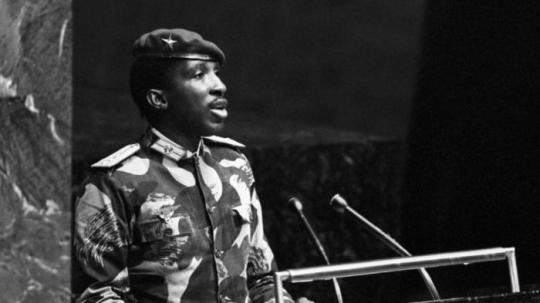
Thomas Sankara
In his 1984 speech before the UN General Assembly, Thomas Sankara spoke out on behalf of all those suffer.
We swear that in future in Burkina Faso nothing will be done without the participation of the people of Burkina Faso themselves, nothing that has not been decided by us, that has not been prepared by us. There shall be no more attacks on our honour and dignity.
Strengthened by this conviction, we want our words to cover all those who suffer, all those whose dignity has been crushed by a minority or a system.
Let me say to those who are listening to me now that I speak not only on behalf of Burkina Faso, my country which I love so much, but also on behalf of all those who suffer, wherever they may be.
I speak on behalf of those millions of human beings who are in ghettos because their skin is black, or because they have a different kind of culture, those whose status is hardly higher than that of an animal.
I suffer, too, on behalf of those Indians who have been massacred, trampled on and humiliated and who, for centuries, have been confined to reservations, so that they do not have any aspirations to any rights whatsoever, so that their culture cannot become enriched through contact with other cultures, including that of the invader.
I speak out on behalf of those who are unemployed because of a structurally unjust system which has now been completely disrupted, the unemployed who have been reduced to seeing their lives as only the reflection of the lives of those who have more than themselves.
I speak on behalf of women throughout the entire world who suffer from a system of exploitation imposed on them by men. As far as we are concerned, we are willing to welcome all suggestions from anywhere in the world that will help us to promote the full development and prosperity of the women of Burkina Faso. In return, we will share with all countries the positive experience we are now undertaking with our women, who are now involved at all levels of the State apparatus and social life in Burkina Faso, women who struggle and who say with us that the slave who will not shoulder responsibility to rebel does not deserve pity. That slave will alone be responsible for his own wretchedness if he has any illusions whatsoever about the suspect indulgence shown by a master who pretends to give him freedom. Only struggle helps us to become free, and we call on all our sisters of all races to rise up to regain their rights.
I speak on behalf of the mothers of our poor countries who see their children dying of malaria and diarrhoea, unaware that to save them there are simple methods available but which the science of the multinationals does not offer to them, preferring to invest in cosmetics laboratories and engage in cosmetic surgery to satisfy the whims and caprices of a few men and women who feel they have become too fat because of too many calories in the rich food they consume with regularity. That must make even members of this Assembly dizzy – not to mention the peoples of the Sahel. We have decided to adopt and popularize the methods that have been advocated by WHO and UNICEF.
I speak on behalf of the child, the child of the poor man, who is hungry and who furtively eyes the wealth piled up in the rich man’s shop, a shop that is protected by a thick window, a window which is defended by an impassable grille, the grille guarded by a policeman in a helmet with gloves and a bludgeon, the policeman placed there by the father of another child, who comes there to serve himself or rather to be served because these are the guarantees of capitalistic representativeness and norms of the system.
I speak on behalf of the artists – poets, painters, sculptors, musicians, actors and so on – people of good will who see their art being prostituted by the show-business magicians.
I cry out on behalf of the journalists who have been reduced to silence or else to lies simply to avoid the hardships of unemployment.
I protest on behalf of the athletes of the entire world whose muscles are being exploited by political systems or by those who deal in the modern slavery of the stadium.
My country is the essence of all the miseries of peoples, a tragic synthesis of all the suffering of mankind but also, and above all, the synthesis of the hopes of our struggles. That is why I speak out on behalf of the sick who are anxiously looking to see what science can do for them – but that science has been taken over by the gun merchants. My thoughts go to all those who have been affected by the destruction of nature, those 30 million who are dying every year, crushed by that most fearsome weapon, hunger.
As a soldier, I cannot forget that obedient soldier who does what he is told, whose finger is on the trigger and who knows that the bullet which is going to leave his gun will bring only a message of death.
Lastly, I speak out in indignation as I think of the Palestinians, whom this most inhuman humanity has replaced with another people, a people who only yesterday were themselves being martyred at leisure. I think of the valiant Palestinian people, the families which have been splintered and split up and are wandering throughout the world seeking asylum. Courageous, determined, stoic and tireless, the Palestinians remind us all of the need and moral obligation to respect the rights of a people. Along with their Jewish brothers, they are anti-Zionists.
Standing alongside my soldier brothers of Iran and Iraq, who are dying in a fratricidal and suicidal war, I wish also to feel close to my comrades of Nicaragua, whose ports are being mined, whose towns are being bombed and who, despite all, face up with courage and lucidity to their fate. I suffer with all those in Latin America who are suffering from imperialist domination.
I wish to stand side by side with the peoples of Afghanistan and Ireland, the peoples of Grenada and East Timor, each of those peoples seeking happiness in keeping with their dignity and the laws of their own culture.
I rise up on behalf of all who seek in vain any forum in the world to make their voices heard and to have themselves taken seriously.
Many have already spoken from this rostrum. Many will speak after me. But only a few will take the real decisions, although we are all officially considered equals. I speak on behalf of all those who seek in vain for a forum in the world where they can be heard. Yes, I wish to speak for all those – the forgotten – because I am a man and nothing that is human is alien to me.
Sankara speaks in front of the United Nations on 4 October 1984. Credit: Getty Images
306 notes
·
View notes
Text
To Our Guild Leadership and Staff: We are proud rank-and-file union and trade association members from every corner of our industry — working on screen, stage, set, and in the field — united in solidarity with the global call for a permanent ceasefire in Gaza and a just, lasting peace. As artists and storytellers, we cannot stand idly by as our industry refuses to tell the story of Palestinian humanity. Following SAG-AFTRA’s statement in sympathy with Israel regarding October 7, many SAG-AFTRA and sister guild members have watched in horror as the Israeli government wages a war of collective punishment on the civilian population of Gaza — killing over 40,000 Palestinians, injuring over 90,000 more, forcibly displacing 2 million people, and openly targeting members of the press and their families. As the IDF continues its assault on “safe zones,” schools, and hospitals, and as civilians in Gaza die from starvation, dehydration, and lack of medical supplies and fuel, major human rights groups have labeled these acts as war crimes, human rights atrocities, and even genocide. The UN has described Gaza as a “graveyard for children” — and estimate that by mid-July “half of the population — more than a million people — could face death and starvation.” As of now, there is no end in sight — only escalation, death, and destruction.
Despite these clear violations of human rights and Israel’s decades-long occupation of Palestinian land and lives, our union leadership has remained silent. Thus, they have made conditional which atrocities we choose to condemn and which innocent lives we choose to acknowledge and mourn. Moreover, SAG-AFTRA and nearly all our sister guilds have remained silent in the face of flagrant and unprecedented attacks on freedom of the press, including the deliberate targeting and murder of Palestinian journalists and their families by the IDF. The Committee to Protect Journalists has declared the war on Gaza “the deadliest period for journalists covering conflict since CPJ began tracking in 1992.” Some of those journalists were members of news organizations whose domestic affiliates are represented under SAG-AFTRA contracts. While SAG-AFTRA issued a public statement at the outset of the Ukraine war demanding that “journalists of all nations working in the war zone are kept safe,” its words now ring hollow if they only apply to some journalists of certain identities.
On December 13, 2023, Israeli forces attacked The Freedom Theatre in the Jenin refugee camp and kidnapped several of its members — fellow actors and directors, who have called for solidarity from theatre workers worldwide. Palestinian trade unions have called for international labor solidarity, reminding us that “the struggle for Palestinian justice and liberation is a lever for the liberation of all dispossessed and exploited people of the world.” Worldwide labor has heeded that call, including major Australian, British, Belgian, Indian, and American unions. On Nov 15, our British peer union, Equity UK, called for an immediate and lasting ceasefire, stating: “We send our solidarity to Palestinian artists suffering in the horrendous conditions created by Israeli bombing, occupation, and apartheid.” Since then, UAW International has called for a ceasefire and announced the formation of a Divestment and Just Transition working group; The Animation Guild (IATSE Local 839) became the first Hollywood union to call for a ceasefire in Gaza; five of the 10 largest American labor unions and federations have officially called for a ceasefire including the NEA (National Education Association), SEIU (Service Employees International Union), and the AFL-CIO; and unions collectively representing a majority of organized workers in the US formed The National Labor Network for Ceasefire. In July, 7 major unions representing over 6 million workers published a letter to President Biden demanding an arms embargo on Israel.
The global call for a ceasefire — from organized labor, artists and fellow SAG-AFTRA members, human rights groups, world leaders, and the majority of the American public — grows louder every day. And yet, our government continues to sponsor the Israeli forces’ assault on Palestinian civilians, and our industry union leadership still refuses to speak out. We reject this silence. Our calling as artists, news reporters, and storytellers is to bring truth to the world. To fight the erasure of life and culture. To unite for justice in the name of the most vulnerable among us. It’s exactly what we did during our historic strike in 2023.
We are the labor that built and sustains this business. When our leaders can’t stand up publicly for peace and justice, then we must do what we always do: organize, fight for change, and win. Our guild leadership must join the largest and most diverse peace movement in a generation — the integrity of our legacy demands nothing less. When confronted with genocide, oppression, and injustice, let us ring the bell for humanity and liberation. An injury to one is an injury to all. We, the undersigned members of SAG-AFTRA, IATSE, WGA, Teamsters, DGA, AEA, AFM, Hollywood Basic Crafts, CSA, PGA, and more, demand our leadership issue a public statement calling for a permanent ceasefire, release of all hostages — both Palestinian and Israeli, and immediate funding and delivery of desperately needed humanitarian aid; to speak out against the targeting and killing of innocent Palestinian civilians, health workers, and our journalist colleagues; to condemn our industry’s McCarthyist repression of members who acknowledge Palestinian suffering; and to eliminate any doubt of our solidarity with workers, artists, and oppressed people worldwide.
77 notes
·
View notes
Text
I just need everyone being increasingly toxic and negative about NATLA to realize that the OG cartoon has a gazillion problems too. The original creators are white, the only POC of the main cast for voice actors were the season 1 villains(Zuko and Iroh). Guru Pathik was voice by a white man doing an Indian accent. The SWT and NWT sexism has consistently be pointed out as inconsistent to the cultures it draws from. Sokka and Katara's names are randomly derived from Arabic because it apparently sounded good. Sokka's face paint has also been criticized. The show and concept, fundamentally, has a LOT of issues.
NATLA would also have similar issues but they're trying to fix it the best they can. It is by no means perfect in it's rep and I doubt it'll be perfect in storytelling but everyone manages to give grace and dismiss all the disrespectful things going on in the original but can't seem to do the same for NATLA.
No one points out the actual issues in the OG because we saw it as children and the overall quality of the show outweighs the flaws. Again, you need not praise the live action, be interested or bother watching it.
Just, don't act like the OG was a perfect piece of media that never did any wrong because I had to live with the only show with a dark skin female protagonist also depicting my identity in one of the most racist caricature ways ever.
83 notes
·
View notes
Text
vedic astrology symbols & motifs pt 3
1. Serpent symbolism

Zendaya wearing a Roberto Cavalli dress with twin serpents on the back. She has her saturn & ketu in UBP.
She's also the ambassador for Bvlgari, a brand known for its iconic serpent motif. Fellow ambassador Priyanka Chopra also has serpent yoni (Rohini moon)
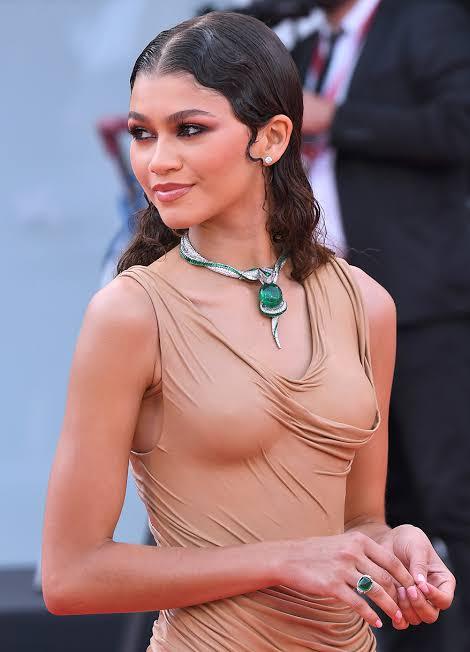
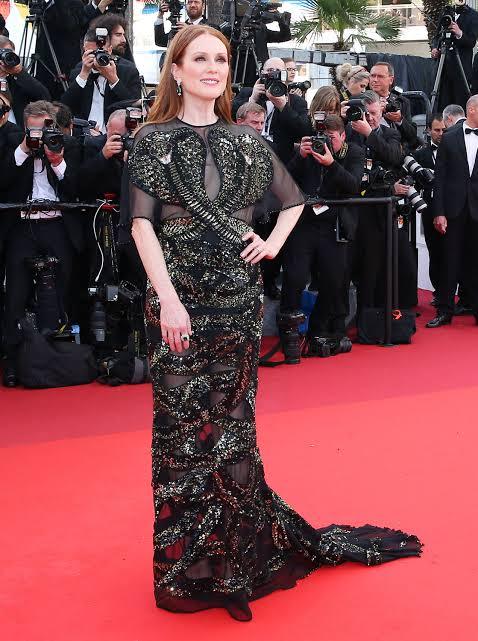
Julianne Moore, mrigashira moon wearing a dress featuring cobras
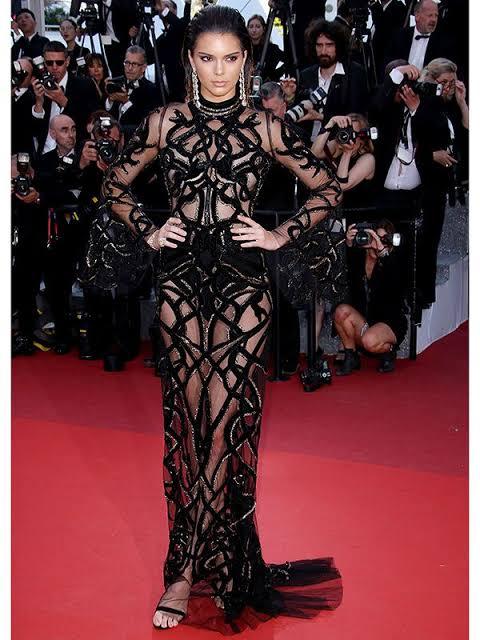
Kendall Jenner, UBP moon wearing a dress with snake imagery

Charlize Theron, ashlesha sun & mercury wearing a serpent pendant.

Cardi B, mrigashira ketu as Medusa

Rohini Mars, uma thurman as medusa in percy jackson
2. Punarvasu girls often play the Trophy Wife or the Dream Girl in media.

Malin Ackerman (punarvasu moon) played the titular Trophy Wife in the sitcom of the same name

Sofia Vergara (punarvasu sun & moon) plays Gloria Pritchett in modern family who is a classic example of a trophy wife.
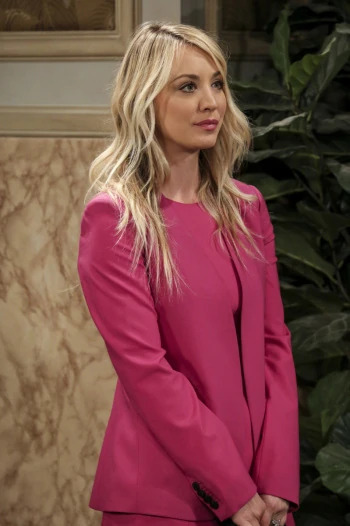
Kaley Cuoco (punarvasu moon) plays Penny in TBBT. Penny is a quintessential "dream girl" type character.
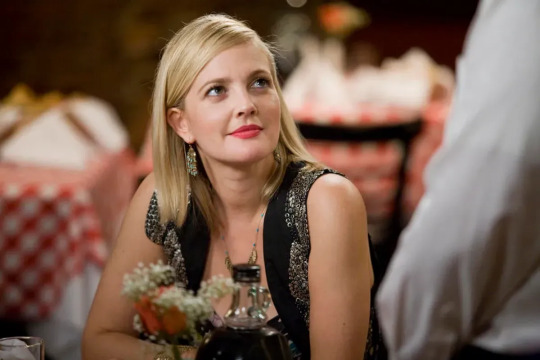
Punarvasu moon Drew Barrymore plays a version of this role in nearly every romcom she's ever been in.
3. I have a soft spot for Virgo-Cancer couples. Virgo is considered the most masculine sign and Cancer is the most feminine sign. Sexual polarity is what drives a relationship and this could be why these couples are so fun to watch on screen and even irl.
Jay on the show, Modern Family is played by Ed O'Neill who is Purvaphalguni moon (tropical virgo) and Sofia Vergara, who plays his wife, has Punarvasu moon (tropical cancer).
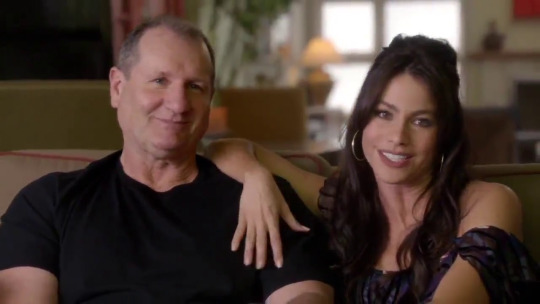
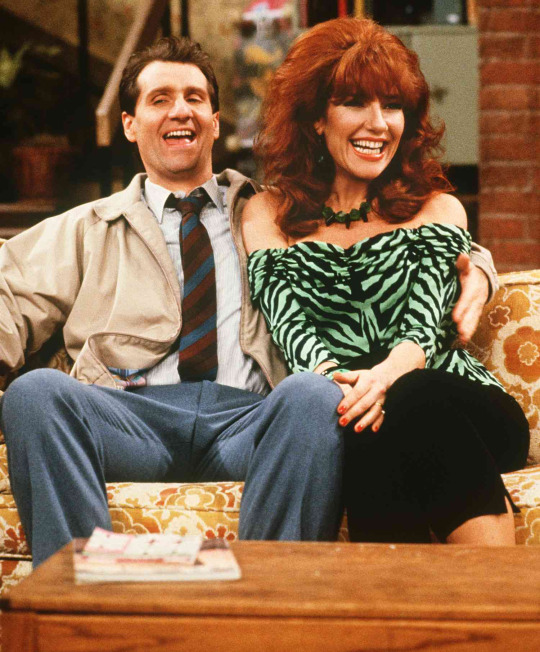
Ed O'Neill was on the show Married With Children, where Katey Sagal played his wife. She has Pushya moon and Punarvasu Ketu. Its interesting how his two most well known characters are both husbands on shows about families with wives played by Cancer girlies👀
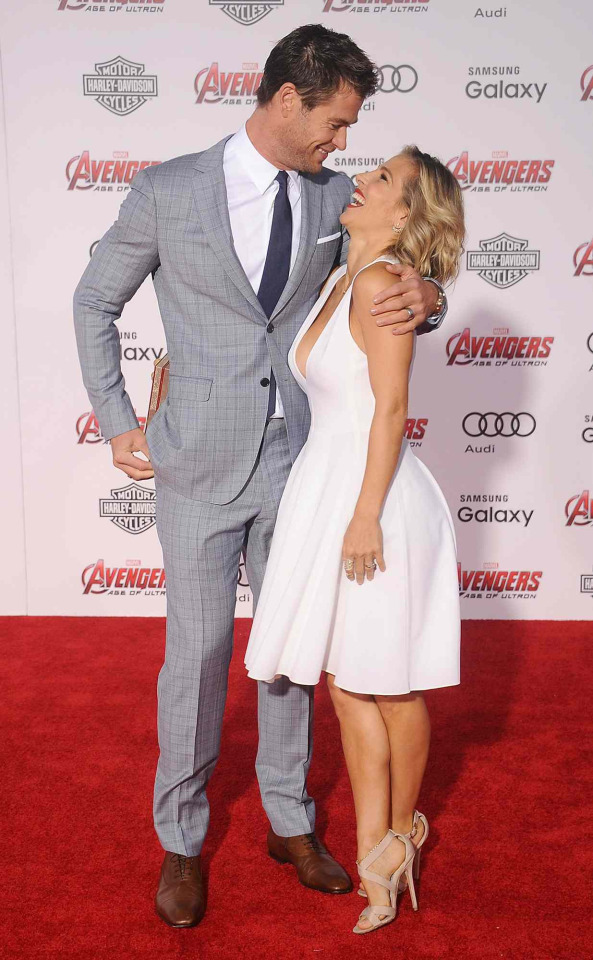
Chris Hemsworth is a Purvaphalguni sun and Uttaraphalguni moon and he is married to Elsa Pataky who is Punarvasu sun and Revati moon. Pisces is opposite to Virgo and opposite signs have insane chemistry.
I'll make a separate post about how movies often pair actors with opposite signs to play a couple and how this happens in real life as well (opposites attract 😏)
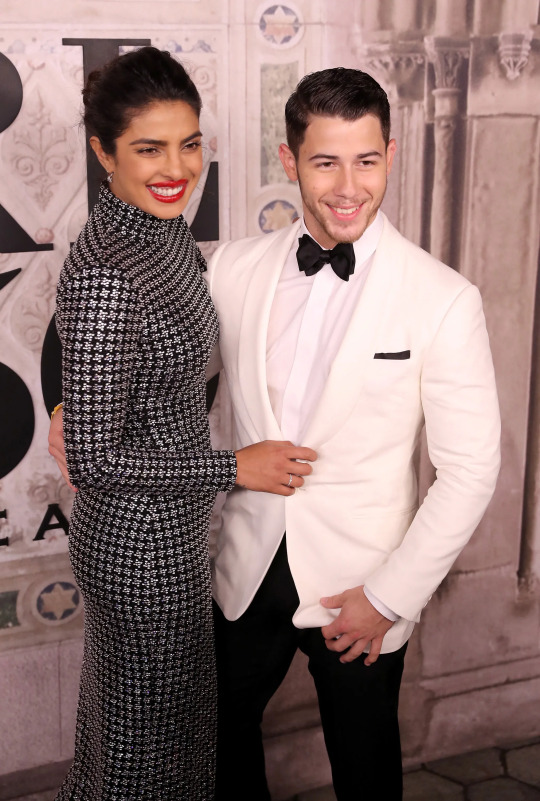
Priyanka Chopra is a Punarvasu sun and Nick Jonas is a Uttaraphalguni sun and stellium.
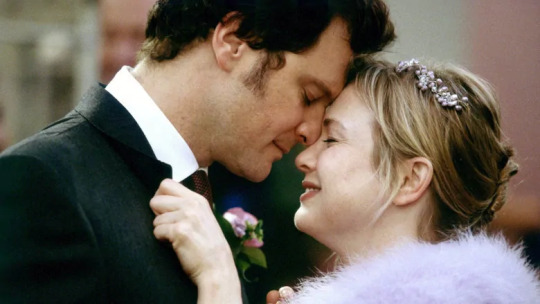
in Bridget Jones' Diary, Mark Darcy is played by Purvaphalguni sun Colin Firth and Bridget is played by Ashlesha moon Renee Zellwegger.
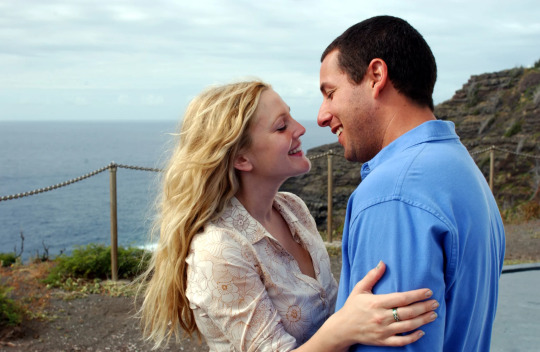
The OG romcom pairing. Adam Sandler, Purvaphalguni sun and Drew Barrymore who is Punarvasu moon.
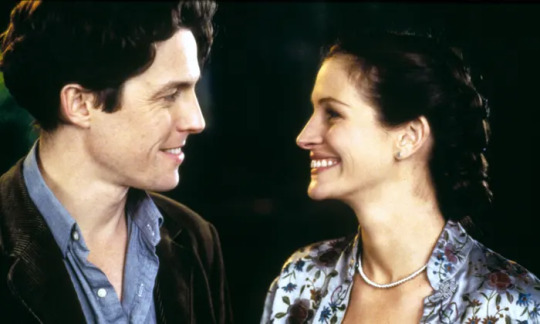
Purvaphalguni sun, Hugh Grant and Pushya rising Julia Roberts in Notting Hill.
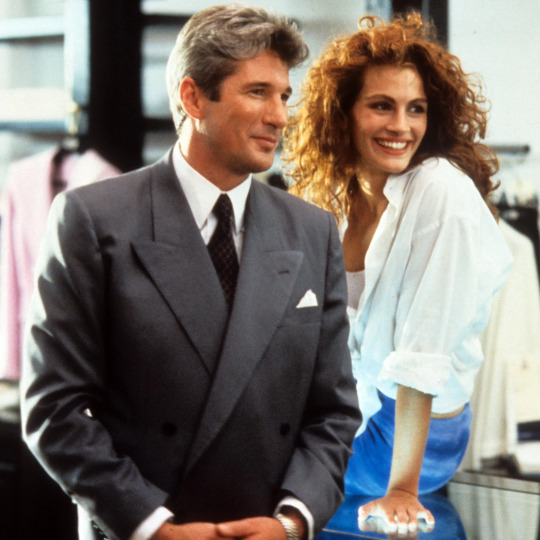
another iconic romcom pairing, Purvaphalguni sun Richard Gere with Pushya rising Julia Roberts.
6. I find a connection between Ashlesha and plastic surgery. Ashlesha is the star of restriction and its tightly coiled by nature. These natives often express their severity through their self-presentation. On another note, these tropical Leo natives become sidereal Cancers and while Leos are known for being extremely self conscious and prone to fluctuating self esteem, adding a layer of Cancerian sensitivity makes things worse for them. Their self-image becomes extremely personal and they feel a need to master perfectionism. (in my perspective, switching to sidereal does not cancel out one's tropical signs, it adds another layer or texture to it. Leos are so sensitive and picky, why? because they are sidereal Cancers underneath the surface. some Cancers are very typically girly and domestic whereas others are not? because they're split between the gemini and cancer signs in sidereal)
Now a lot of celebs get work done, especially these days but I think there are some celebrities who are known for their plastic surgery and these are just a few off the top of my head.

Megan Fox, ashlesha moon.

Kylie Jenner, ashlesha sun
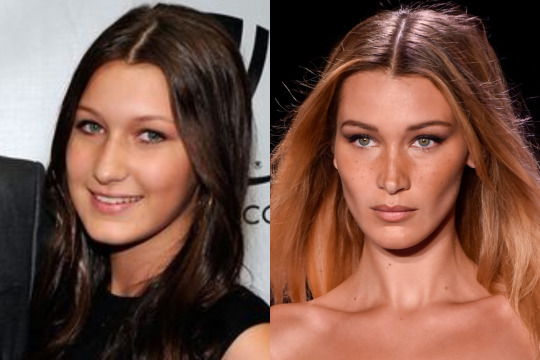
Bella Hadid, ashlesha mars


Sridevi, ashlesha sun and stellium.
(she had already had some work done in the first pic) Sridevi is probably one of the first Indian actors to get plastic surgery back in the 70s/80s and was known for it.
#astro notes#astro observations#vedic astrology#sidereal astrology#vedic astro notes#astrology notes#astrology observations#nakshatras
264 notes
·
View notes
Note
Suchitra Sen's impending loss is tearing my heart out. How can Bengali cinema's greatest female icon lose out in round 2 itself? I won't let her go down without a fight!
Suchitra Sen entered films as a married woman and a mother which was highly unusual for not just Bengali cinema, but for the whole of Indian cinema as well. In an age when actresses tried their best to hide the fact that they were married and had children, Suchitra Sen was not afraid to swim against the tide.
Hailing from erstwhile East Bengal (present day Bangladesh) she left with her family for present day West Bengal in India following Partition in 1947 and she had to adapt to the dialect and pronunciations used in Bengali films made in India.
Many talk about Suchitra Sen's quiet dignity on screen, but summing it up so briefly does her injustice. She played melodramatic without resorting to melodramatic acting. Her screen presence was so heartbreakingly real and didn't have the theatrical nature that was associated with Indian cinema of that era.
Starting from the 1950s, Bengali rom coms were all Suchitra Sen and Uttam Kumar. They had incredible chemistry on screen. But Suchitra Sen was determined to prove that she was not just Uttma Kumar's other half on screen but a capable and frankly good actress in her own right. So, in the 1960s she went on to do many women centric films opposite other lead actors (such as Bikash Roy and Soumitra Chatterjee), thus giving us some gems of Bengali cinema like Uttar Falguni (1963) and Saat Pake Bandha (1963), the latter won her the best actress award at the Moscow International Film Festival making her one of the first Indian actresses to win an International award.
In Uttar Falguni (1963), she plays a woman who flees an abusive marriage and becomes a courtesan to support her daughter. In Saat Pake Bandha (1963), she plays a young woman whose marriage disintegrates due to her mother's interference. In both these films, Sen doesn't need words, her loss, her pain, her anger are all etched on her face in different moments but never does it fall to melodramatic theatrics.
In Devdas (1955), Bimal Roy's classic production of Sarat Chandra Chattopadhyay's celebrated novel, she plays the role of Paro and is in my opinion the best of the many Paro's I've seen on screen in adaptations ranging from 1936 to 2002 and beyond.
In Aandhi (1975), she played a politician estranged from her husband dealing with a clash of love and career.
Suchitra Sen was a classic Bengali beauty and an icon, not just of Bengal but of India as a whole
https://www.youtube.com/watch?v=kSV2xoFQCJ8&list=PLA_A9T_Uj7IxMGFk5Pif7gjJR46v8FRPZ&index=5
Suchitra Sen vs Cyd Charisse
The linked video:
youtube
59 notes
·
View notes
Photo
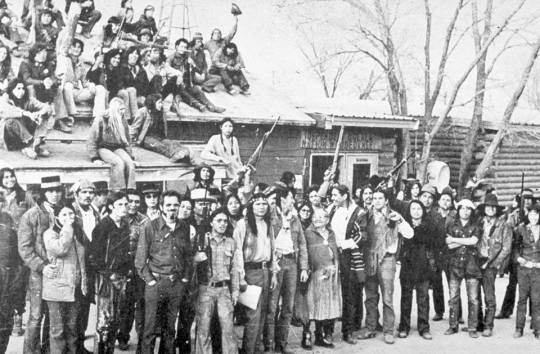
On this day, 27 February 1973, armed Native American activists occupied Wounded Knee, South Dakota, in protest against tribal corruption and the continuing failure of the US government to fulfil treaties they signed with Indigenous peoples. Around 200 Oglala Lakota people, alongside activists in the American Indian Movement (AIM) took over the site of the 1890 massacre of Native Americans by US troops. National guard troops, FBI agents and federal marshals swarmed the area, shooting at occupiers with machine guns and tracer fire. Len Foster, a Diné (Navajo) man who took part in the occupation, recounted to Alysa Landry of Indian Country Today taking part in 11 firefights with federal officers: “Each one was very intense, very life-threatening… It was an intense, very serious engagement.” Despite suffering casualties, some fatal, the occupiers held out for 71 days until eventually surrendering. Though not successful in achieving its stated goals, the occupation galvanised huge support for AIM, famously including Marlon Brando’s boycott of that year’s Oscars, instead sending Sacheen Littlefeather, an Apache actor in his place to collect his best actor award, who delivered a speech about Wounded Knee to reporters backstage after she was threatened with arrest for speaking on the podium. For Len Foster, “In a way, it was a very beautiful experience… Wounded Knee opened a lot of hearts and minds to what oppression we were suffering. We were downtrodden, oppressed, made to feel ashamed. We were told to cut our long hair, not to participate in ceremonies, to become Christian and burn our medicine bundles. All the decisions we made at Wounded Knee affect our children, grandchildren and great-grandchildren.” Learn more about Indigenous resistance in the Americas in this book: https://shop.workingclasshistory.com/collections/books/products/500-years-of-indigenous-resistance-gord-hill https://www.facebook.com/workingclasshistory/photos/a.296224173896073/2219663954885409/?type=3
552 notes
·
View notes
Text
Warren Berlinger

Physique: Chubby Build Height: 5′6″ (1.68 m)
Warren Berlinger (August 31, 1937 – December 2, 2020) was an American character actor, with Broadway runs, movie and television credits, and much work in commercials. He was known for Blue Denim, The Long Goodbye, The World According to Garp and That Thing You Do!. He also appeared in shows like Charlie’s Angels, Happy Days, Operation Petticoat, Murder, She Wrote and Grace and Frankie, his final TV work. Berlinger died from cancer on December 2, 2020, at the age of 83.

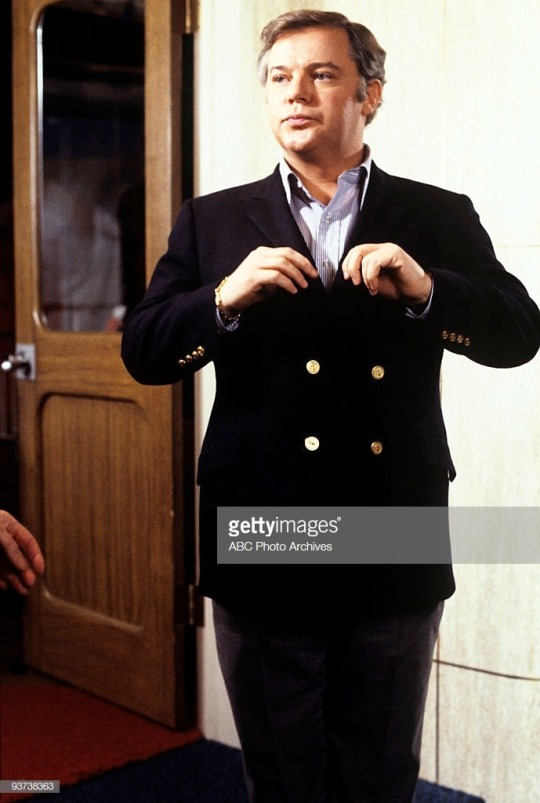
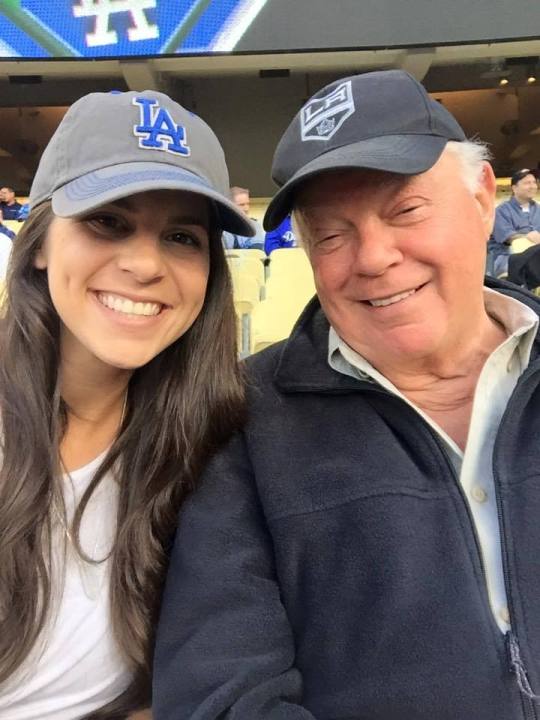


Berlinger went from playing juveniles on Broadway to naive, innocent teens in films and on TV, to somewhat rotund, average joes on the small screen, sustaining a career for more than 50 years. While channel surfing, I stumble upon an episode of Friends and thought I saw Charles Durning in it. Turns out, it was Berlinger. They had pretty much the same features, height and even sound alike with their NY accents. From then on Berlinger became my bootleg Durning.


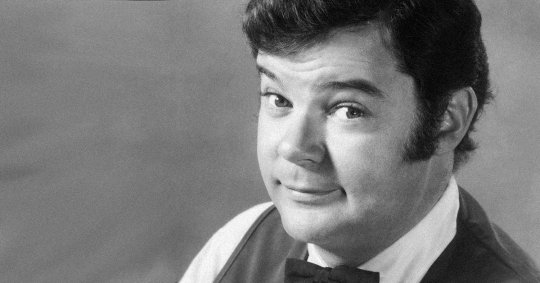
He was married to Betty Lou Keim from 1960 until her death in January 2010, and they had four children. other online sources will tell you he was the nephew of Milton Berle, whose real last name was, yes, Berlinger. The truth, if you asked Warren, was that he was much more distantly related to Berle. He would sometimes however suggest jokingly that the legendary Berle phallus ran in the family.

RECOMMENDATIONS: Emergency! (TV Series 1973–1975) I Will… I Will… For Now (1976) Happy Days (TV Series 1975–1981) The Cannonball Run (1981) Murder, She Wrote (TV Series 1985–1989) Ten Little Indians (1989) Justice (1999)
40 notes
·
View notes
Text
Pitch for a “The Dark Pictures Anthology” game:
1) The title
“The Thrill of the Hunt”
2) Prologue
1920, British-controlled India. Jaspreet Singh and Sameer Patel, Indian rebels who fought against the British Empire (the false protagonists of the prologue), have been captured by the British Army. Although they’ve been sentenced to execution, they learn that they are actually being transferred to the Kingsley Gentlemen’s Society. From what we can tell of the Society, it’s run by the rich and powerful of British society.
Jaspreet and Sameer then learn the reason why they’ve been transferred. Today is the day of “The Hunt” where the Society members work together to take down the prey in the designated game preserve. And Jaspreet and Sameer are the game.
Since this is the prologue, Jaspreet and Sameer unfortunately end up being killed by the Society.
3) Main story
Present day, Falkland Islands. Five strangers have been brought to the mansion of the Kingsley Gentlemen’s Society. Four of the strangers are there after being invited by the Society while the fifth is there because they are dating one of the Society members. For the invitees, they all have the same goal; join the Society and cement their status as part of the upper class.
But, just like with Sameer and Jaspreet, that’s not the case at all. Today is, once again, the day of “The Hunt”. Since the 1920s, the Society has gotten bored of hunting down people who have already been sentenced to death. To get an extra thrill, the Society now targets the hopeful and wealthy.
In the main villain’s words, “it is far more satisfying to tear down people who are happy and actually have something to lose since you know that it is you who caused their despair”.
As the players, it is up to you to determine if the five strangers can work together as a team to either escape or destroy the Kingsley Gentlemen’s Society. Or end up becoming just another trophy on their shelves…
4) Playable cast
a. Desmond Johnson (ADVENTUROUS, RATIONAL): A highly successful American lawyer whose dream is to become a Supreme Court Justice one day. Desmond becomes the de facto leader of the group. He is played by the celebrity guest actor, Michael B. Jordan.
b. Faye Simmons (NAIVE, INQUISITIVE): A biologist from London who was dating one of the Society members. Much to her horror, she learns that the reason why the Society member wanted to date her was so that he could lure her in and force her to participate in The Hunt.
c. Hiroki Akashi (STERN, OVERBEARING): A high-ranking shareholder of a Japanese corporation. Despite coming off as a little vain and arrogant, he does show a willingness to work with the group since he wants to make it home to his children.
d. Omar al-Ghazi (PARANOID, AMBITIOUS): A Saudi Arabian oil tycoon who has trouble trusting other people. His behavior is a result of numerous business deals that went wrong due to people betraying him, as well as his family becoming estranged to him. Despite this, Omar does take pride in his ambitious nature, even if he ended up alienating his loved ones.
e. Adrianna Reyes (ABRASIVE, LONELY): A Mexican billionaire businesswoman who is currently dealing with a scandal. She reveals to the group that even though she’s married, she had an affair with an unnamed Senator in the Mexican Senate. The reason for the affair was that her current marriage is loveless, only done for political reasons.
5) Bonus poll
#tumblr polls#polls#supermassive games#man of medan#little hope#house of ashes#the devil in me#directive 8020#michael b jordan#dark pictures anthology#dark pictures house of ashes#dark pictures little hope#dark pictures the devil in me#the dark pictures anthology#the dark pictures the devil in me#the dark pictures little hope#the dark pictures house of ashes#the dark pictures man of Medan#until dawn#the quarry#horror games#horror video games#horror ideas#story ideas#game idea#the curator#the dark pictures#video game#video games#gaming poll
7 notes
·
View notes
Text

Mary "Te Ata" Thompson Fisher
1895 - 1995 Lived to be 100 yrs old ...
Te Ata Thompson Fisher, whose name means “Bearer of the Morning,” was born Dec. 3, 1895, near Emet, Oklahoma. A citizen of the Chickasaw Nation, Te Ata was an accomplished actor and teller of Native American stories ... She received her early education in Tishomingo, and eventually went to the Oklahoma College for Women. While there, it was evident Te Ata had a natural talent for drama ... Her career as an actor and storyteller spanned more than 60 years. She worked as a storyteller to finance her acting career. She would tell Chickasaw legends, myths and chants, including performing rituals in native regalia ... Te Ata attended the Carnegie Institute of Technology in Pittsburgh, Pennsylvania, for one year. From there, she moved to New York City, where she met and married Clyde Fisher. During the 1930s she performed at summer camps in New York and New England ... In the prime of her career, she performed in England and Scandinavia, at the White House for President Franklin Roosevelt, for the King and Queen of Great Britain, and on stages across the United States ... Although Te Ata worked as an actor and drama instructor, she is best known for her artistic interpretations of Indian folklore, and for her children's book she co-authored on the subject ... Her world-renown talent has won her several honors including induction into the Oklahoma Hall of Fame in 1957, being named The Ladies’ Home Journal Woman of the Year in 1976, being named Oklahoma's Official State Treasure in 1987, and having a lake near Bear Mountain in New York named in her honor ... She is also the subject of a video, God's Drum, the proceeds of which have supported the Te Ata Scholarship Fund for Indian students at her alma mater, the University of Science and Arts of Oklahoma in Chickasha, Oklahoma.
Te Ata died Oct. 26, 1995, in Oklahoma City, though her legacy and influence on the Native American storytelling traditions continues to this day.
15 notes
·
View notes
Text
Jenny's ongoing list of films watched 2024
January
RRR (2023)*
Peter's Friends (1992)*
The Lady Eve (1941)
How to Get a Head in Advertising (1988)*
High Fidelity (2000)
Frieda (1947)*
Oh...Rosalinda! (1955)
The Quick and the Dead (1995)*
The Barefoot Contessa (1954)*
The Life and Death of Col. Blimp (1943) Commentary Track (2012)*
Rhubarb (1951)*
The Birds (1963)*
House of Yes (1997)*
Cassandra Cat (1963)*
Foreign Correspondent (1940)
The Long Goodbye (1973)
Night of the Comet (1984)
The Day the Earth Caught Fire (1961)*
For Me and My Gal (1942)*
The Grand Budapest Hotel (2014)
The Small, Back Room (1949)
House of Games (1987)
Water (1985)*
The Ballad of John and Yoko (2023)*
The Meaning of Life (1983)
Track 29 (1988)*
*New to me
Thoughts on the New to Me films:
New Year's Eve we watched RRR, a lot of fun, energetic, bright and action-packed. I enjoyed the way that little attention was given to the British characters. They were straight up villains in ill fitting ahistorical costumes, kind of like the way Indian/Asian characters are treated in Western films most of the time...$$$
New Year's Day we watched Peter's Friends, a drama/comedy from the early 90s starring all of the famous Cambridge Footlights. Big Chill-ish film set in a country house over the Christmas holidays. $$$
How to Get a Head in Advertising was weird and also really good. Had a similar vibe to Withnail and I (possibly because of Richard E. Grant, but also possibly the mixture of the surreal with the realistic). Quite stage-y in some ways but clever and savage in it's satire of life in the 80s. $$$
Frieda: Oh I loved this! Weird World War II melodrama about a German girl marrying a British boy and all the trouble it causes with his complex family situation. Such a stellar cast including the late, great Glynnis Johns. $$$$
The Quick and the Dead: I set my expectations quite low for this and was pleasantly surprised. I liked Sam Raimi's comic book-y take on gunfighters and esp. loved Sharon Stone's character. We love to see a female action hero with no love interest. A nice twist on the Man with no Name trope. Excellent cast as well with Russell Crowe, Gene Hackman, Roy Scheider and Woody Stroud in his final film. $$$
The Barefoot Contessa: Joseph Mankewitcz is one of the geniuses of old Hollywood but this ain't it, chief. Just kind of all of the place melodrama that makes no sense and relies too much on Ava Gardner looking amazing in technicolor in the South of France. A bit of a commentary on Grace Kelly who a few years earlier married minor royalty on the Riviera. Even Rossano Brazzi can't save this mess for me. $
Rhubarb: Two genres I usually kind of hate (family-friendly animal centered film, sports film) combined into one and it's actually a lot of fun. Ray Milland and a bunch of classic character actors as the baseball team (also Leonard Nemoy has a tiny part as a mobster) in this slight/ predictable romp. $$
The Birds: Woah, shit this was good. I should have known. Amazing tension created and Hitchcock just sells the surreal horror with lots of rear projection...so. much. rear. projection. $$$
House of Yes: How about House of NOPE. Ugh what a mess this was. Some good performances and intriguing story, but it was very stagey and I don't know why the 90s couldn't make a story about adult children and their parents without reducing everyone to cliches and stereotypes but this and Six Degrees of Separation are definitely guilty of that, but the latter is just a better film. $
Cassandra Cat: Takes a long time to get to the cat which given that this was a family film from the 60s might be a problem for some viewers, expecting a more cat-centric movie. Interesting riff on fairy tales from the Czech New Wave. Beautiful Demy-esque technicolor and settings make this 60s nonsense fly by. $$
The Day the Earth Caught Fire: 60s nuclear panic disaster film that really just shows the earth as it is now in the throws of global warming. Yikes. Thoughtfully written and well acted by a bunch of folks I'd never heard of. $$
For Me and My Gal: Directed by Busby Berkley and starring Gene Kelly and Judy Garland and set in the 1920s on the Vaudeville circuit, I was expecting a lot more fun, dancing, color, costumes etc. This is actually more of a black and white war time melodrama with some music shoved into it and the dancing is very rudimentary. (I think this is probably because Garland esp. at this stage wasn't in the same league with Gene Kelly and I think it would have been too noticable...). Filmed at the entry of America into WW2 this was quite a deliberate propaganda piece. $$
TLADOCB Commentary: I've watched this movie 20 times at least but the commentary really made me think about a bunch of things differently. Can't say I recommend unless you are fanatic though as it's obviously pieced together from interviews Michael Powell and Martin Scorcese $$
Water (1985): If you smoke the exact right strain of sativa and ignore some of the more dated aspects of this 80s comedy, that reads as if Local Hero were a Cheech and Chong film--this is a total classic. Irreverent Michael Caine just straight up breaking character the minute he turns into a guerilla fighter in the jungle and being far too competent and cool, and then snapping back to sweetly shy, inept British Civil Servant, finding he actually loves his hated backwater post (the invent Casara part Caribbean, part Devon Jurassic Coast) while having to actually do his job. Political satire and fully both barrels to Maggie Thatcher and Reagan. Good on em. Filmed in St. Lucia, the movie has a zany heart and little taste, hoovering up vast quantities of competent TV players from my youth: Herman Munster and Reginald Perrin to name but two. Awkward love story and some uneven acting from Valerie Perrin and Brenda Vaccaro. I enjoyed myself, heartily, anyway. $$$
The Ballad of John and Yoko: Technically a video essay with amazing production values (the licensing alone was epic) dragging together disparate topics around the central theme of women being blamed for bad things happening to infantalized male geniuses. Is it the most coherent argument? No. Does it absolutely tap into many unexpressed or implied ideas that have been floating around since me too? Absolutely. $$
Track 29: This was some of the worst casting I've ever seen in a film. When I think of Texas nurse who is into trains and spanking, I don't automatically think of comedian Sandra Bernhardt. When I think of an actress of that era who was old enough to play Gary Oldman's mother, I don't think of Theresa Russell who is the same age as Oldman and looked every bit as young as he did in the film. Maybe that was the point? I'm not sure. The story was weird, like a Southern Gothic melodrama/black comedy ala Flannery O'Connor, but there was something off about the whole thing.
20 notes
·
View notes
Text
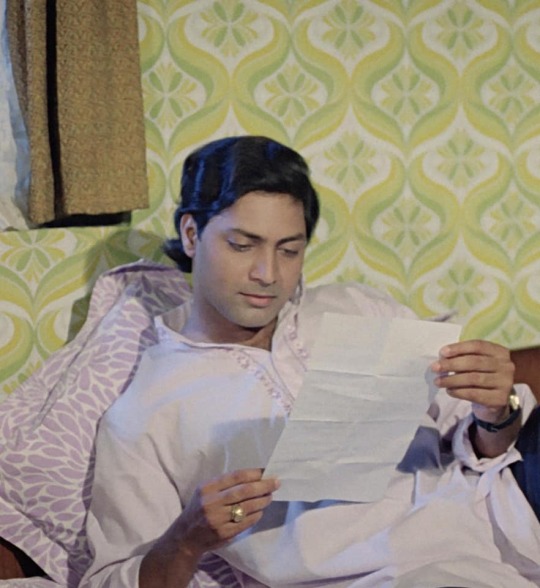

Today, we remember Vikram Gokhale, who passed away on November 26, 2022. A renowned actor in Marathi theatre, Hindi films, and television, he was the son of veteran actor Chandrakant Gokhale. Born in Pune in 1945, Gokhale came from a family of cinema pioneers, including his great grandmother Durgabai Kamat, the first female actor of Indian screen, and grandmother Kamlabai Gokhale, the first female child actor in Indian cinema.
Gokhale's directorial debut came with the Marathi film 'Aaghaat' in 2010. He received the National Film Award for Best Actor for 'Anumati.' Married to Vrushali since 1975, they had two daughters, Asawari and Neha. Gokhale was also a successful real estate businessman and a committed social activist, supporting disabled soldiers, children of lepers, and orphan education through his family's foundation.
Retiring from stage due to a throat ailment in 2016, he continued his film career until his last days. Gokhale passed away at 77 in Pune, leaving a legacy in Indian cinema and theatre.
23 notes
·
View notes
Text
Rachel Paula Abrahamson at NBC News:
Openly gay actor Maulik Pancholy was disinvited from speaking at a middle school anti-bullying assembly after concerns were raised about his political activism and what two school board members called his “lifestyle.” Pancholy’s scheduled appearance at Mountain View Middle School in Mechanicsburg, Pennsylvania, was unanimously overturned by the district’s school board in a public meeting on April 15. “If you research this individual, he labels himself as an activist, he is proud of his lifestyle and I don’t think that should be imposed upon our students at any age,” board member Bud Shaffner said at the meeting. Trisha Comstock, a former parent at the school, started a Change.org petition to reinstate the empathy and anti-bullying assembly. “What happened is homophobic. Anyone can go and watch the meeting,” Comstack tells TODAY.com. “This board is close to causing some real harm.”
Why was Maulik Pancholy disinvited?
Board member Kelly Potteiger raised concerns that Pancholy, 50, would discuss his children’s book “The Best at It,” which is about a gay Indian American boy. “It’s not discriminating against his lifestyle — that’s his choice,” Potteiger said in the meeting. “But it’s him speaking about it.” Pancholy played the character Jonathan, Alex Baldwin’s devoted assistant, in the sitcom “30 Rock,” and also voiced the character Baljeet in “Phineas and Ferb.” Pancholy’s presentation on anti-bullying at Mountain View Middle School was canceled by an 8-0 vote. TODAY.com has reached out to Pancholy for comment. Brooke Ryerson, an LGBTQ high school sophomore, attended Mountain View Middle School. Ryerson and her mom plan to express their disappointment at the next board meeting on May 6.
“It was going to be an assembly about empathy and anti-bullying,” Ryerson, 16, tells TODAY.com. “But that doesn’t matter to the board. They want to silence us in any way they can.” The “us” that Ryerson is referring to is the gay community. “They’re sending that message that they don’t want our identities in the school,” Ryerson says. “I’m lucky that I have such accepting friends and family, but it’s gotta be devastating for the kids who don’t and now feel even more like they’re not wanted somewhere.”
The cowardly Cumberland Valley School District school board in Mechanicsburg, Pennsylvania voted to cancel gay 30 Rock actor Maulik Pancholy's appearance at a middle school anti-bullying assembly, with 2 of its board members using the homophobic "lifestyle" canard to justify canceling Pancholy's address to middle schoolers.
See Also:
LGBTQ Nation: School board cancels anti-bullying talk by gay actor because of his “lifestyle”
#Mountain View Middle School#Pennsylvania#School Boards#LGBTQ+#Bullying#Anti LGBTQ+ Extremism#Maulik Pancholy#Mechanicsburg Pennsylvania#The Best At It#Cumberland Valley School District
14 notes
·
View notes
Text
HBO remake... my thoughts! (Hagrid was STICK-THIN in the books & misc.)
I think people need to separate the movie from the show. The show is trying to do book-accurate actors/actresses, right? I heard that they are trying to be more faithful to the ages of the characters too (THANK GODS). i really want them to show that Hagrid was NOT fat. he was tall, sure (11 feet). But nowhere in the books did it say he was necessarily 'fat' or 'round' unlike Molly Weasley and Neville. I write a lot of fanfic & i always try to portray my characters as book-accurate as possible and all my Hagrids are never fat because I can't find book proof of that. In fact, he seems pretty thin, when his weight is factored in. He is 11 ft but weighs only 289 lbs. He's a walking stick.
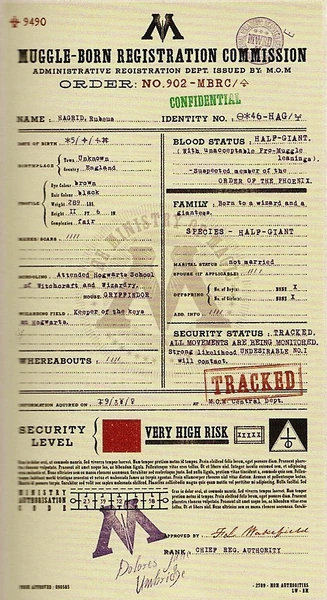
But i fear a bunch of non-book readers will have issue with certain book aspects in the show bc it doesn't match the movie versions.
Like, please give us BLACK-haired GREEN-eyed Harry. Give him a wig and contacts. Those bright green eyes were mentioned way too often in the books to be glossed over. And Harry was supposed to be a hot jock like his dad. Daniel Radcliffe isn't ugly by any means, but he didn't turn heads in the same way Tom Felton did. I know this isn't something that can be controlled though /:
The movie versions did a very poor portrayal of the book characters IMO, including the ages. Idk what they were thinking with casting 30-40 yo ppl to play Harry's 21 yo parents... Adrian (James Potter) who played his 21 dad was 43 in first movie...... I think JKR purposely made all the characters (Potters, Sirius, Lupin, Snape) younger so they could be a bit more relatable to a younger audience. PLEASE MAKE THEM YOUNGER HBO!!! Age really reflects A LOT in the perception of characters! Esp now that most HP fans are around the age of these adult characters.
Also, as a POC, I want them to keep all the ethnicities the same. Unfortunately, the book characters were mainly white (as shown in various pictures throughout the books--like JKR's hand-drawn picture where Hermione was drawn with Dean and only Dean was shaded in since he's black and she's not. It's notable that Harry doesn't look Indian either & his hair doesn't have curls). As much as we wish these characters were different ethnicities, JKR clearly never intended for them to be:

In the late 90's (at the time the books were written), no one was 'woke' like we are now. JKR had no incentive to try to be diverse in her story. Any POC was glaringly obvious by their names. 'Cho Chang' or 'Patil.'
I believe her comments on a black Hermione for HPCC was to support the black actresses that played Hermione, likely because she knew the backlash that those actresses might receive.
As far as I know, the only canon POC characters were the Patil sisters, Cho, Dean, Lee Jordan, and Kingsley. Why don't we as a fandom prop those actual POC characters up? Include them as part of the main ship in more fanfics rather than side ships, make more fanart, etc., rather than try to turn white characters brown?
I don't want any ethnicity changes just for diversity's sake, as that is a bit disrespectful to us POC. The hope is that future stories will be more ethnically diverse from the start, rather than have token characters thrown in just for diversity's sake.
Changing Snape to black (like the rumors I've heard) would look so bad--a skinny black kid who straightens his 'greasy' hair, targeted for bullying purposes by James, a pureblood white wizard. Umm. See how godsdamn awful that looks?
Snape official book drawing (not black at all--he actually looks kinda Asian in the first pic):

Not to mention:

"Snape’s sallow skin had gone the color of sour milk." -Harry Potter & the Prisoner Of Azkaban
Indeed, even Dumbledore's sexuality was so subtle it was never explicitly mentioned because JKR didn't write the books with the intention of being 'woke.' She just wrote an epic kid's adventure for children ages 9-12, and I truly believe it's the fans who have made the books more meaningful than JKR intended them to be!
—Just a fan that wants CORRECT portrayals (ages, ethnicities, looks).
HBO promised a book-accurate show. GIVE US WHAT YOU PROMISED.
6 notes
·
View notes